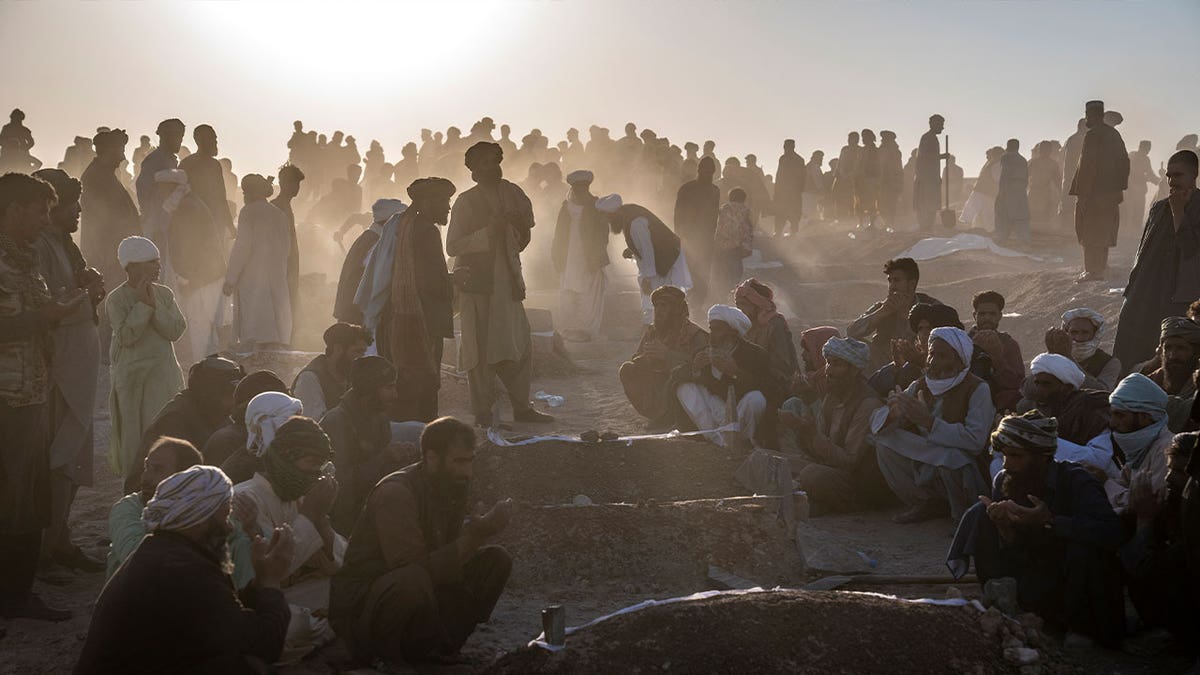Fox News Flash top headlines for October 10
Fox News Flash top headlines are here. Check out what's clicking on Foxnews.com.
- On Saturday, an earthquake with a magnitude of 6.3 struck the Herat province of Afghanistan and caused a death toll of at least 2,000 people.
- On Wednesday, another power earthquake, also with a magnitude of 6.3, struck the same region.
- The recent quake triggered a landslide that blocked a highway and over a hundred people were sent to the hospital.
Another strong earthquake shook western Afghanistan on Wednesday morning after an earlier one killed more than 2,000 people and flattened whole villages in Herat province in what was one of the most destructive quakes in the country's recent history.
The magnitude 6.3 earthquake on Wednesday was about 17 miles outside Herat, the provincial capital, and 10 kilometers (6 miles) deep, according to the U.S. Geological Survey. It triggered a landslide that blocked the main Herat-Torghondi highway, Information Ministry spokesman Abdul Wahid Rayan said.
The aid group Doctors Without Borders said the Herat regional hospital received 117 injured from Wednesday's temblor. The group, also known by its French acronym MSF, said it sent additional medical supplies to the hospital and was setting up four more medical tents at the facility.
4.8 MAGNITUDE EARTHQUAKE STRIKES ITALY, NO DAMAGE REPORTED SO FAR
"Our teams are assisting in triaging emergency cases and managing stabilized patients admitted in the medical tents," MSF said on X, formerly known as Twitter.
Wednesday's quake also flattened all 700 homes in Chahak village, which was untouched by the tremors of previous days. Now there are mounds of soil where dwellings used to be. But no deaths have been reported so far in Chahak because people have taken shelter in tents this week, fearing for their lives as tremors continue to rock Herat.
Villagers are distraught over the loss of their homes and livestock, often their only possessions, and worry about the coming harsh winter months. Some said they had never seen an earthquake before and wondered when the shaking of the ground would stop.
Many said they have no peace of mind inside the tents for fears the "ground will open and swallow us at any moment."
The epicenter of Saturday's quake — also of the same magnitude 6.3 — was about 25 miles northwest of the provincial capital, and several aftershocks have been strong.

Afghans bury hundreds of people killed in an earthquake to a burial site in Herat province, Afghanistan, on Oct. 9, 2023. (AP Photo/Ebrahim Noroozi)
Taliban officials said more than 2,000 had died across Herat after the earlier quakes. They subsequently said the quakes killed and injured thousands but didn't give a breakdown of casualties.
Besides rubble and funerals after Saturday’s devastation, there is little left of the villages in the region's dusty hills. Survivors are struggling to come to terms with the loss of multiple family members and in many places, living residents are outnumbered by volunteers who had come to search the debris and dig mass graves.
In Naib Rafi, a village that previously had about 2,500 residents, people said almost no one was still alive besides men who were working outside when the quake struck. Survivors worked all day with excavators to dig long trenches for mass burials.
On a barren field in the district of Zinda Jan, a bulldozer removed mounds of earth to clear space for a long row of graves.
"It is very difficult to find a family member from a destroyed house and a few minutes to later bury him or her in a nearby grave, again under the ground," said Mir Agha, from the city of Herat, who had joined hundreds of volunteers to help the locals.
SENIOR TALIBAN OFFICIALS VISIT AFGHAN VILLAGES FOLLOWING EARTHQUAKE THAT CAUSED 2,000 DEATHS
Nearly 2,000 houses in 20 villages were destroyed, the Taliban have said. The area hit by the quakes has just one government-run hospital.
On Tuesday, U.N. deputy spokesman Farhan Haq said Zinda Jan was the worst-affected area, with more than 1,300 people killed and nearly 500 people still reported missing.
He said U.N. satellite imagery also indicated extreme levels of destruction in the district of Injil.
"Our humanitarian colleagues warn that children are particularly vulnerable and have suffered severe psychological distress from the earthquake," he said.
CLICK HERE TO GET THE FOX NEWS APP
Earthquakes are common in Afghanistan, where there are a number of fault lines and frequent movement among three nearby tectonic plates. Afghans are still reeling from recent quakes, including the magnitude 6.5 earthquake in March that struck much of western Pakistan and eastern Afghanistan, and an earthquake that hit eastern Afghanistan in June 2022, flattening stone and mud-brick homes and killing at least 1,000 people.
Neighboring Pakistan is among the countries that have offered assistance but the delivery of its humanitarian aid has been on hold since Monday.
On Wednesday morning, the pledged supplies had yet to leave Pakistan. Authorities were waiting for "clearance" from the Taliban, two government officials in Islamabad said, speaking on condition of anonymity because they were not authorized to speak to the media.
Ties between the two countries have come under pressure since Pakistan announced a deadline for undocumented migrants, including 1.7 million Afghans living illegally in the country, to leave before Oct. 31 to avoid arrests and forced deportation.
